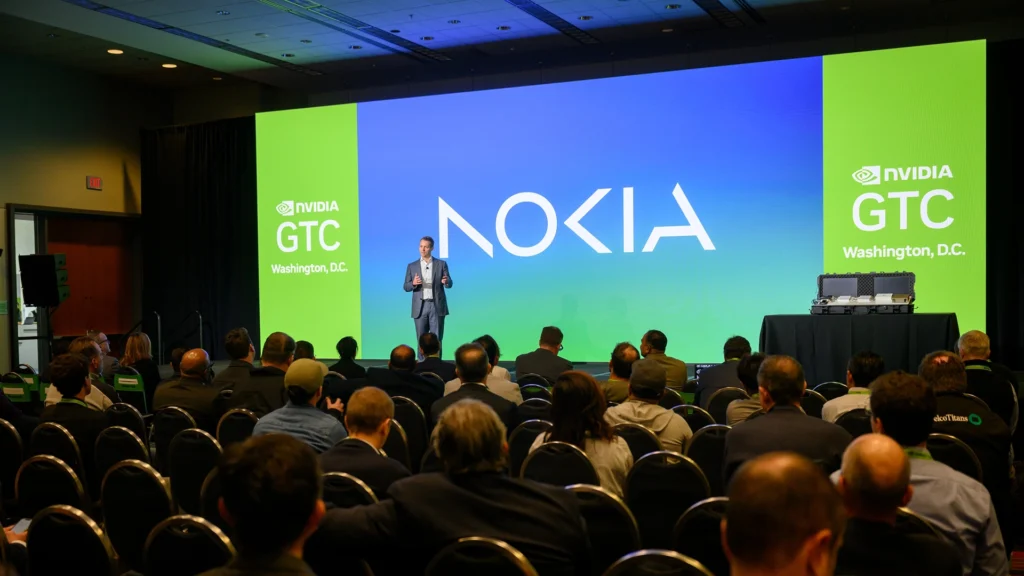South Africa has switched on its first operational AI Factory – an Altron–NVIDIA collaboration designed to place enterprise‑grade compute, platforms and services inside the country.
The launch moves core AI workloads from offshore clouds to local infrastructure, cutting latency, easing data‑sovereignty risks, and opening a path for African developers and enterprises to build at global scale.
Highlights
- Local first: Enterprise AI compute, tooling, and services delivered in‑country via an AI‑as‑a‑Service model – lower latency, better data residency, fewer compliance headaches.
- NVIDIA platform: Built on NVIDIA’s accelerated‑computing stack for training and inference – positioning South African firms on the same rails used by global leaders.
- Build for scale: Targets priority use cases in financial services, healthcare, retail, mining, logistics, and public sector, with managed MLOps and deployment support.
- Ecosystem signal: A catalyst for skills, startups, and suppliers across cooling, power, optics, and integration, not just model labs.
- Africa‑first lens: Keeps sensitive datasets under POPIA while enabling export-grade AI services to the continent and beyond.
What Exactly Is an “AI Factory” – And Why It Matters
Think of an AI Factory as industrial-grade capacity + platform + services under one roof. It hosts GPU clusters, high-speed networking, secure storage, model catalogs, and MLOps pipelines – then wraps them with managed onboarding, governance, and SLAs.
The point is to convert power + silicon into repeatable AI outputs: copilots, agents, predictions and automation your teams can deploy quickly. Altron is delivering that as a utility‑like service for South African enterprises.
Inside the Altron–NVIDIA Partnership
Altron is standardizing on NVIDIA’s accelerated stack – GPUs, networking, and enterprise software – so local customers can train, fine‑tune and serve models without leaving the country. Early reporting points to a phased rollout that brings capacity online in tranches, with enterprises consuming it via subscriptions or dedicated tenants.
Why Local Compute Changes the Business Case
- Lower latency and higher reliability: Real‑time agents, computer vision, and analytics behave very differently when inference runs near your users and systems.
- Data sovereignty by design: Keeping workloads under POPIA guardrails – and closer to your auditors – reduces legal and reputational risk, especially in financial services and healthcare.
- Cost visibility: Predictable, local SLAs and egress‑free architectures trim bill shock and enable clearer total cost of ownership.
- Talent flywheel: Clusters attract practitioners, which attract startups, which attract capital. That is how ecosystems compound.
Industry Snapshots – Where Value Lands First
- Banks and insurers: RAG copilots, fraud models, credit scoring, and document automation where data cannot freely cross borders.
- Healthcare: Imaging and triage models, hospital operations agents, and secure synthetic‑data generation.
- Retail and e-commerce: Dynamic pricing, demand forecasting, and personalized search with inference close to the edge.
- Mining and logistics: Computer vision for safety, autonomous equipment assistance, predictive maintenance and routing.
- Public sector: Citizen‑service copilots, records digitization and multilingual interfaces – all with local residency.
The Hard Parts: Power, Cooling and Interconnects
AI Factories are energy‑intensive. Operators must solve power procurement, liquid cooling, and optical interconnect bottlenecks while keeping uptime high. Expect partnerships with utilities and IPPs, plus on‑site efficiency upgrades. For a sense of the scale, the IEA tracks data‑center energy trends here: iea.org – Data centres.
Africa‑First Advantage
A domestic AI Factory lets South African firms build once and export many times – to SADC, ECOWAS, and beyond. With on‑prem/private‑cloud options for sensitive workloads and sovereign‑cloud posture for public entities, the region can finally match global service levels without shipping data offshore.
What Executives Should Do Next
- Map candidate workloads: Prioritize inference-heavy use cases where latency, privacy, or cost justify local deployment.
- Pilot on managed capacity: Use the AI Factory’s platform to fine-tune and deploy one production-grade use case inside 90 days.
- Get governance right: Stand up an AI reliability function – evaluations, security, and model‑risk management – aligned to POPIA and sector regs.
- Power plan: Ask vendors about power‑use effectiveness, liquid‑cooling roadmaps, and resilience strategies before you sign.



